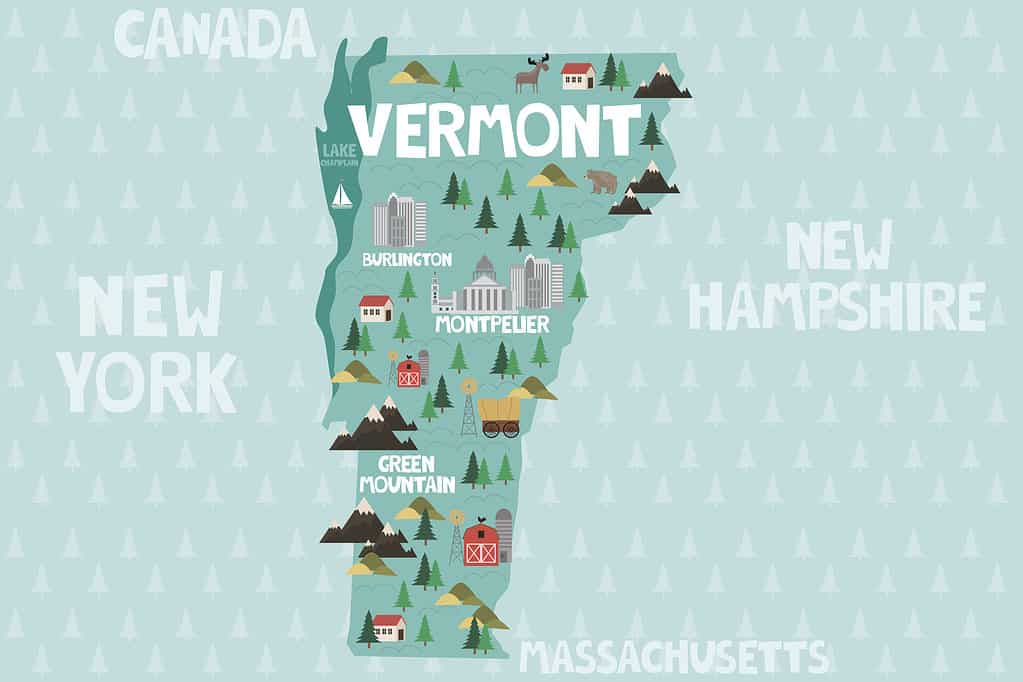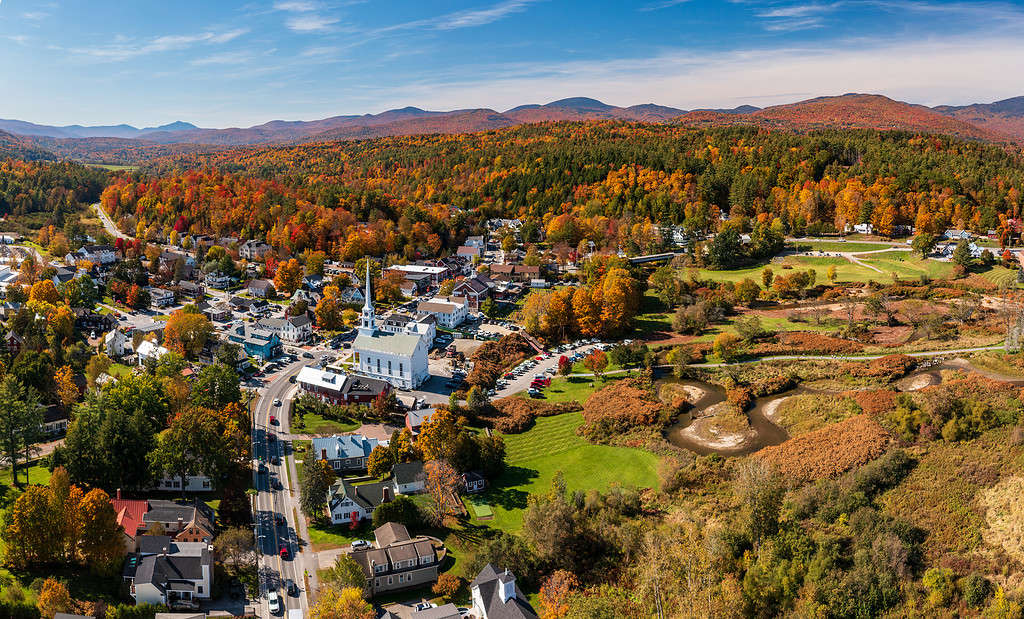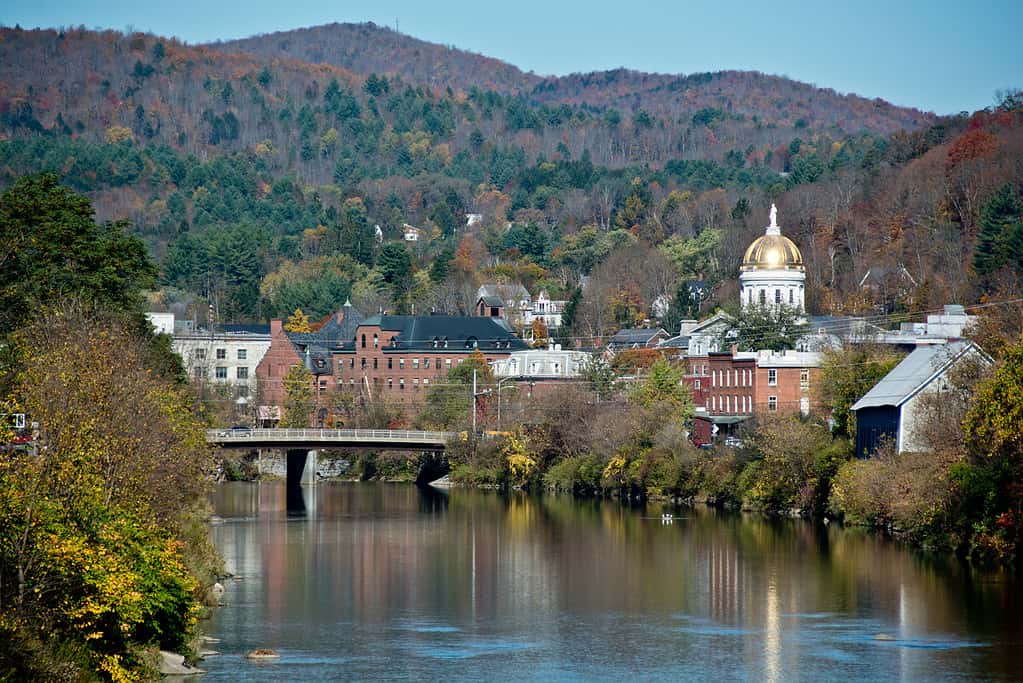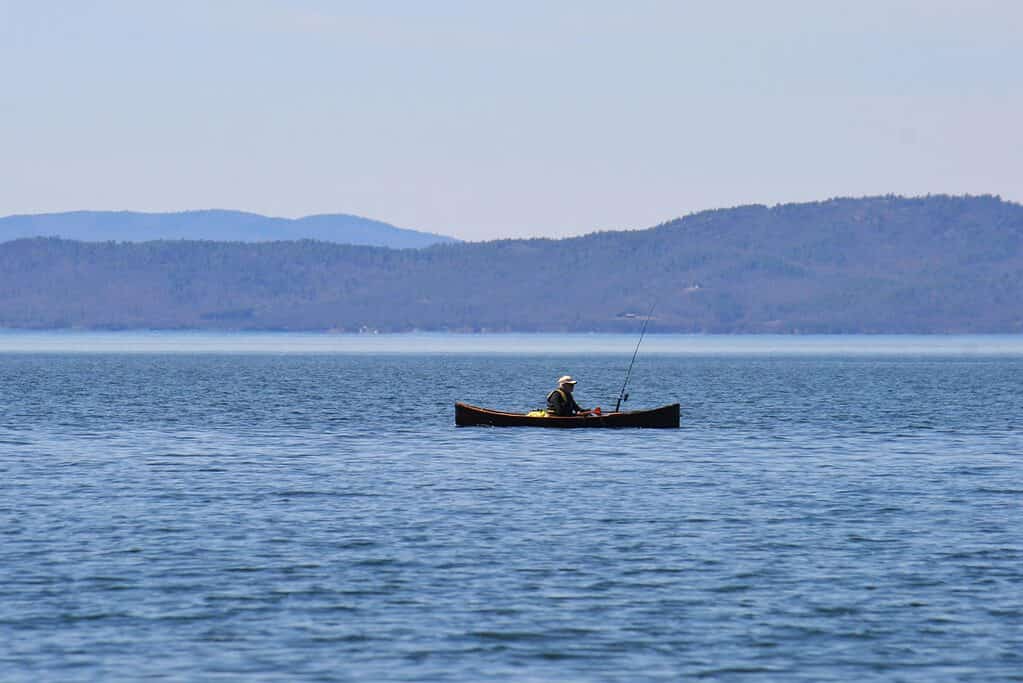How Wide Is Vermont? Total Distance from East to West
Vermont conjures up images of pristine traditional American villages with white-steepled churches, maple syrup, and covered bridges. A retreat where busy people in busy places might go for a drive to see autumn foliage, go boating on Lake Champlain, or hiking or skiing in the Green Mountains. Vermont is all this and more, packed into a “V-shaped” land area 157.4 miles from north to south and ranging from 90.3-41.6 miles wide from east to west. Now that you know the answer to the question in the title, read on a bit to learn some unique facts about Vermont as well as how it compares to other states.
Facts About Vermont

©iStock.com/BonneChance
- Vermont was the first new state added to the country that was not one of the original 13 colonies.
- The territory of Vermont was disputed between New York and New Hampshire.
- Vermont declared itself an independent republic for 14 years until becoming the 14th state in 1791.
- The name of the state comes from French words meaning “green mountain.”
- Vermont was famous for the “Green Mountain Boys,” a militia that protected the area from New York and fought in the American Revolution, the Civil War, and the Spanish-American War.
- Lake Champlain in the northwest has a moderating influence on the climate of northern Vermont.
- 78% of the state is forested. Vermont is the largest producer of maple syrup in the United States.
- Burlington, Vermont, was the birthplace of Ben & Jerry’s Ice Cream in 1978.
How Does Vermont Compare to Other States?

©BackyardProduction/iStock via Getty Images
Vermont is the 6th smallest state by land. In fact, 5 of the 10 smallest states are all located in New England. The settlers in this region were typically Puritan religious dissenters who founded colonies in search of religious freedom to practice their own beliefs. However, the concept of separation of church and state was not yet established, so factions that differed theologically were unwelcome and ended up splitting off to form their own colonies.
In addition to an independence-minded culture, the geography of New England was and is rocky, hilly, and subject to harsh winters. These conditions were conducive to small family farms, tight-knit local communities, and governments closely connected with the lives of their citizens.
The 10 Smallest States by Land Area

©ErikaMitchell/iStock via Getty Images
Vermont is the 6th smallest state by land area. The chart below lists the 10 smallest states in the country in land area. It also indicates which sovereign nation in the world is closest in square miles to that state. Half of the smallest states are in the New England region.
| State | Land Area (mi²) | Comparable to: | |
|---|---|---|---|
| 1 | Rhode Island | 1,214 | Samoa |
| 2 | Delaware | 1,982 | Trinidad and Tobago |
| 3 | Connecticut | 5,543 | Timor-Leste |
| 4 | New Jersey | 7,353 | Slovenia |
| 5 | New Hampshire | 9,304 | Rwanda |
| 6 | Vermont | 9,616 | Rwanda |
| 7 | Massachusetts | 10,565 | Albania |
| 8 | Hawaii | 10,931 | Armenia |
| 9 | Maryland | 12,407 | Moldova |
| 10 | West Virginia | 24,038 | Latvia |
The 10 Smallest States by Population

©Ilir Hasa/Shutterstock.com
Vermont has the second-smallest population of any state. This table lists the 10 smallest states in the country by population. It also indicates which sovereign nation in the world has a similar number of residents as each state. Of the least-populated states, four are located in the Rocky Mountains and the Northern Great Plains regions of the country.
| State | Population | Comparable to: | |
|---|---|---|---|
| 1 | Wyoming | 578,803 | Cabo Verde |
| 2 | Vermont | 645,570 | Luxembourg |
| 3 | Alaska | 732,673 | Solomon Islands |
| 4 | North Dakota | 774,948 | Bhutan |
| 5 | South Dakota | 895,376 | Comoros |
| 6 | Delaware | 1,003,384 | Fiji |
| 7 | Rhode Island | 1,095,610 | Fiji |
| 8 | Montana | 1,104,271 | Djibouti |
| 9 | Maine | 1,372,247 | Timor-Leste |
| 10 | New Hampshire | 1,388,992 | Timor-Leste |
Visiting a Small State
There’s a lot to be said for visiting a state that is small in both land area and population. It’s not overcrowded with locals. Keep in mind, though, there could be a lot of tourists depending on the time of year you go. This is especially the case during the peak of fall foliage. Another nice thing about Vermont is that things generally move at a slower pace. You’ll likely drive on smaller roads that keep you better connected to the local people and culture.
But one of the best things about it is that if you plan your route strategically, you can see much of the state in a series of day trips over a week or so. Skip the urge to drive to nearby states and cover as many miles as possible. Just take in Vermont for a week or two. For sure, a state that’s famous for maple syrup and ice cream is going to give you some sweet, sweet memories!









